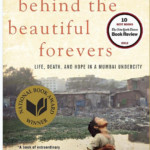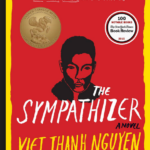August 19th, 2014 — 11:52am
The Invention of Wings by Sue Monk Kidd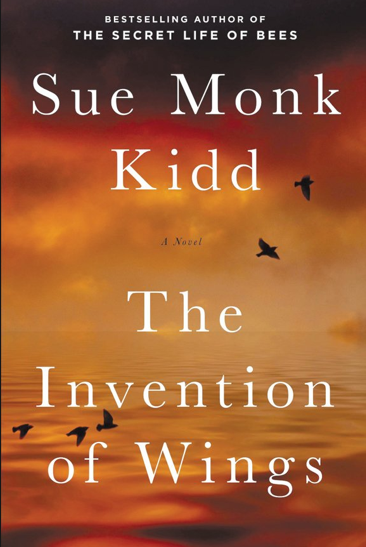
It is less than 200 years ago that slavery was a fixture in this country. As part of the curriculum in American schools we learn about this horrific treatment of human beings in the South and how the North tolerated this institution until the Emancipation Proclamation and ultimately the Civil War. However, I wonder if each succeeding generation of Americans really understands and appreciates what it was like to be enslaved in America and how this was accepted as part of everyday life by so many of the white people? When the award winning movie Twelve Years a Slave was released, there were some people who were disturbed by it because they felt it was too “painful to watch.” We are fortunate that there are filmmakers and in this case an author who can find a creative approach, to not only tell the story of slavery in the United States, but to do it a way that we not only understand what went on but that we can also have some idea of how the victims of slavery felt. I will say that this empathic experience for the most part extends to the oppressed rather than to understand the mindset of so many people who accepted this institution without question.
In this book we mostly follow two women for most of their lives. One is Sarah Grimke, born into a wealthy Charleston family at the beginning of the 19th century. Her father was a prominent judge, her mother was a socialite, her brothers were destined to be prominent lawyers and she and her sisters were expected to follow in her mother’s footsteps. Slavery was a way of life and there were 15- or so “Negroes” living in their house, each of whom had various duties. When there were children of the slaves, they would be brought up to follow in their parent’s footsteps. In fact, one such young girl was Hetty Handful who was presented to Sarah as a present for her 11th birthday to be her personal “slave.” Sarah rejects this plan, as much as a girl her age can reject the rules and the plan of the family. She secretly begins to teach Hetty to read which is forbidden. We meet Sarah’s father, the patriarch of the family and we see his acceptance of slavery with barely a reservation as well as his clear ideas about the limited role of women. We meet Charlotte, Hetty’s mom and a most skillful seamstress but a woman who knows where she came from and what she will never accept.
The reader becomes a fly on the wall in this household for the next several years as these girls grow up. We come to know the other members of this household, both slave and non-slave. We learn about the courting tradition, as Sarah and her sisters are formally allowed meet men at the proper time. The reader is introduced to how the slaves are punished when they make mistakes which can be a whipping or even worse (and the latter is described in vivid detail). Sarah develops a very close relationship with one of her younger sisters Nina, as at her own requests she is granted the role of godmother to her. Not surprising, their social values are quite similar and we are able to follow their fascinating paths, as both become prominent abolitionists. As in any good novel there are various sub stories. While the chapters alternate between “ Sarah “ and “ Hetty,” the fate of Charlotte, Hetty’s mother and Nina, Sarah’s special sister, inform the latter part of the book. As the story progresses, it also becomes clear that this not only a story about slavery in the United States but it is also about the beginning of the fight of woman to achieve equality in this country.
In fact, I don’t believe that it will spoil your enjoyment of this compelling novel, if I reveal what the author has put in a note at the conclusion of the book. That is that Sarah Grimke and her sister Nina Grimke were real people. They both became prominent abolitionists as well as advocates for women’s rights despite some concerns by supporters who believed that such rallying might dilute the difficult fight against slavery. While the dialogue, many subplots and storylines were the author’s imagination, other events and even some quotes were taken from some writings, biographies and historical reports which therefore confirms the feel of this story, which is one of authenticity. It is a book that captivates and holds you until the last line!
Comment » | FG - Fiction General, FH - Fiction Historical
August 14th, 2014 — 5:28pm
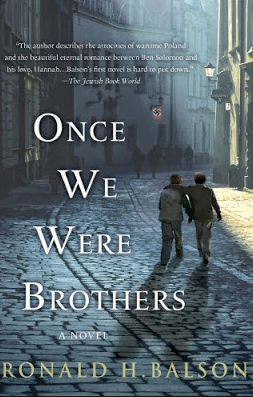 Once We Were Brothers. – By Ronald H. Balson- I am always interested in another Holocaust novel. Perhaps I don’t want to forget (how could one forget?). Or perhaps it is the trying to figure out how would I have handled these horrible situations had I been born a few generations earlier where some of my ancestors had lived and died. It helps that the author in this case; Ronald Balson has a fresh perspective. He introduces us to situation where Ben Solomon, an elderly Holocaust survivor confronts Elliot Rosenzweig, a very wealthy Chicago philanthropist, of actually being Otto Piatek, a prominent Nazi who executed many Jews in Poland during WW II. On top of this he tells a story how Otto as a young boy had been taken into his household before the war after his own parents abandoned him. When the Nazi’s came to power his parents returned to take the 18 year old back to Germany where he became a high-ranking Nazi who was soon to be assigned to Poland. The now wealthy Chicago man denies this accusation and the plot unfolds as Ben relates his story to Catherine who he hopes will be his attorney in what he wants to be a public lawsuit to expose this man for stealing his and other family’s money and jewels as well as participating in the murder of so many Jews. Ben painfully reveals his memory of the events of his childhood growing up with this man and the hope that Ben’s parents had that the child they had taken in would help them from his new position. Using this vehicle, the horrific details of the plight of the Jews in Poland are related. So many historical details were worked into the story that I had the impression that this first time author had on his writing desk a history book of all the events that happened in Poland at that time There were twists and turns but there were all familiar situations: the gradual tightening of the noose around the neck of the Jews as they were moved into the Ghetto and eventually were taken to concentrations camps. There was the good Priest hiding some Jews and the underground resistance doing it’s thing and of course the horrendous course of events for so many Jews. It was also a personal story of certain people who we came to know and care about as events transpired during the war and now in modern times as the possibility of a legal trial became a reality.
Once We Were Brothers. – By Ronald H. Balson- I am always interested in another Holocaust novel. Perhaps I don’t want to forget (how could one forget?). Or perhaps it is the trying to figure out how would I have handled these horrible situations had I been born a few generations earlier where some of my ancestors had lived and died. It helps that the author in this case; Ronald Balson has a fresh perspective. He introduces us to situation where Ben Solomon, an elderly Holocaust survivor confronts Elliot Rosenzweig, a very wealthy Chicago philanthropist, of actually being Otto Piatek, a prominent Nazi who executed many Jews in Poland during WW II. On top of this he tells a story how Otto as a young boy had been taken into his household before the war after his own parents abandoned him. When the Nazi’s came to power his parents returned to take the 18 year old back to Germany where he became a high-ranking Nazi who was soon to be assigned to Poland. The now wealthy Chicago man denies this accusation and the plot unfolds as Ben relates his story to Catherine who he hopes will be his attorney in what he wants to be a public lawsuit to expose this man for stealing his and other family’s money and jewels as well as participating in the murder of so many Jews. Ben painfully reveals his memory of the events of his childhood growing up with this man and the hope that Ben’s parents had that the child they had taken in would help them from his new position. Using this vehicle, the horrific details of the plight of the Jews in Poland are related. So many historical details were worked into the story that I had the impression that this first time author had on his writing desk a history book of all the events that happened in Poland at that time There were twists and turns but there were all familiar situations: the gradual tightening of the noose around the neck of the Jews as they were moved into the Ghetto and eventually were taken to concentrations camps. There was the good Priest hiding some Jews and the underground resistance doing it’s thing and of course the horrendous course of events for so many Jews. It was also a personal story of certain people who we came to know and care about as events transpired during the war and now in modern times as the possibility of a legal trial became a reality.
Although I have experienced many other books and movies about the Holocaust, I was still engrossed and moved by this book. It was not one of the best of the lot on this subject but if you are drawn to this subject you will not be disappointed.
Comment » | FH - Fiction Historical
August 8th, 2014 — 4:47pm
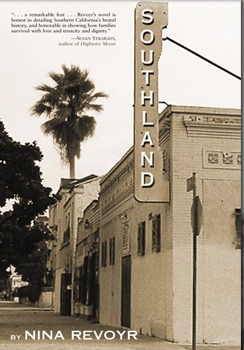 Southland by Nina Revoyr– Having recently read and reviewed a great book mostly about social justice in Los Angeles ( see previously reviewed book in this blog) which included some insight into the history of racial conflicts and violence in this city, I was very receptive to picking up this novel. In fact, it did deal with these subjects with a compelling storyline which focused on the struggles of Japanese-Americans including their relationships with African Americans in Los Angeles over the past 50 plus years.
Southland by Nina Revoyr– Having recently read and reviewed a great book mostly about social justice in Los Angeles ( see previously reviewed book in this blog) which included some insight into the history of racial conflicts and violence in this city, I was very receptive to picking up this novel. In fact, it did deal with these subjects with a compelling storyline which focused on the struggles of Japanese-Americans including their relationships with African Americans in Los Angeles over the past 50 plus years.
The opening setting is the 1990s and Jackie Ishida is a Japanese-American young woman, preparing to enter law school and who also happens to be a lesbian whose grandfather Frank Sakari suddenly passes away. She comes into possession of a forgotten old box in his closet, that had a few clippings, some pictures and a great deal of cash with a note that it should be given to Curtis, a young teenager who worked in his old grocery store that was destroyed in Watts riots. It is well known to the family that those difficult times were very traumatic for many people including Frank not only because of the destruction brought about by riots but because in midst of them, Curtis and 3 younger boys were found locked in the grocery store freezer, having frozen to death. It was thought by some that this murder was the work of an unpopular white police officer who was known for mistreating kids in the neighborhood and was reportedly seen talking to them at the store on day of the tragedy. Jackie is moved to try to find more details. She connects with James Lanier, an African American who was Curtis’cousin. Once she talks to him, they team up to try to find out what really happened, in order to try to bring about some kind of long delayed justice. They embark upon a road trip (mostly limited to the Los Angeles area) where they interview several people who could shed light on this dastardly crime.
As the author follows this duo, she also provides flashbacks to earlier times to allow us to understand not only the characters in some depth but also the social climate of Southland, American, also known as Los Angeles. This includes the history of the Japanese who settled in this area and were sent to internment camps during World War II. We also learn about those young men who enlisted and fought in the War including some of the famed accomplishments of the Japanese American 442 regiment. The story that Jackie and James uncover is more than a study of how race relations played out during the past 50 years but it is also is a very personal moving story about her grandfather. She also finds meaningful insight into herself.
This 2003 novel deservedly won several awards. However, it did not hold me on edge of my seat or qualify as a page turner despite it being a great example of a “cold case being brought to life.” Some of the flashbacks, while necessary for insight into the characters, did seem to slow the flow of the book. A good part of the theme of this book also qualifies as an example of the search for biological roots which I have found in many true life clinical cases as well as a major storyline numerous motion pictures. See my blog about this subject.
Comment » | FG - Fiction General, FH - Fiction Historical, FM - Fiction Mystery






